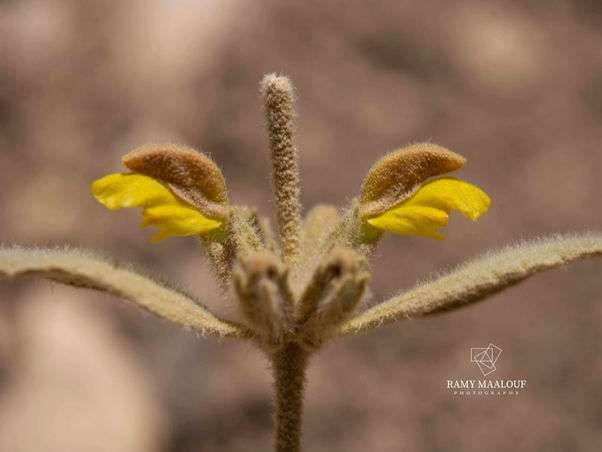Family |
Lamiaceae
Phlomis brevilabris
Ehrenb. ex Boiss.
Leb. Syr.
Phlomis brevilabris Ehrenb. ex Boiss.
(First published in Fl. Orient. 4: 782, 1879; Nouvelle Flore du Liban et de la Syrie, vol. 3, p. 133; 1983)
• Life-form & habit: Woody at the base, 20–60 cm tall, multicaule, with erect stems. Stems very finely tomentose.
• Leaves: Greyish, with strongly marked venation on both surfaces; petiolate. Radical leaves sometimes subcordate; cauline leaves rounded or cuneate at the base, more or less long-petiolate. Floral leaves smaller, those of the lower whorls exceeding the flowers.
• Inflorescence & flowers: Pseudo-verticils; bracts long, setaceous. Calyx tomentose with spreading indumentum, with lanceolate teeth about as long as the tube. Corolla yellow, about twice as long as the calyx. Filaments not appendiculate.
• Fruits: Nutlets glabrous.
• Phenology: Flowers May–August.
• Habitat & elevation: Montane slopes, usually at fairly high elevations.
• Lebanese distribution: Pass of Togra, Jabal Barouk, Cèdres de ‘Aïn Zehalta, Jabal Kneissé, Jabal Sannine, Neba‘ el-Laban, Jisr-el-Hajar, Qala‘at el-Fakhra, ‘Aqoura, Cèdres above Dimane, Cedars of Bsharré, Ehden, Hermel to Sir, Hasroun, Saghbine, and Hermon (Chebaa, Yanta road).
• Syrian distribution: Anti-Lebanon (Bloudane, Jabal Halimé, Tala‘at Moussa) and Hermon (above ‘Arné, slopes below the summit).
• Native range: Endemic to the Levant (Lebanon and Syria).
• Diagnostic remarks: Characterized in the field by its greyish foliage and duller, less showy yellow flowers compared with related species. Leaf shape and calyx indumentum show some variability












